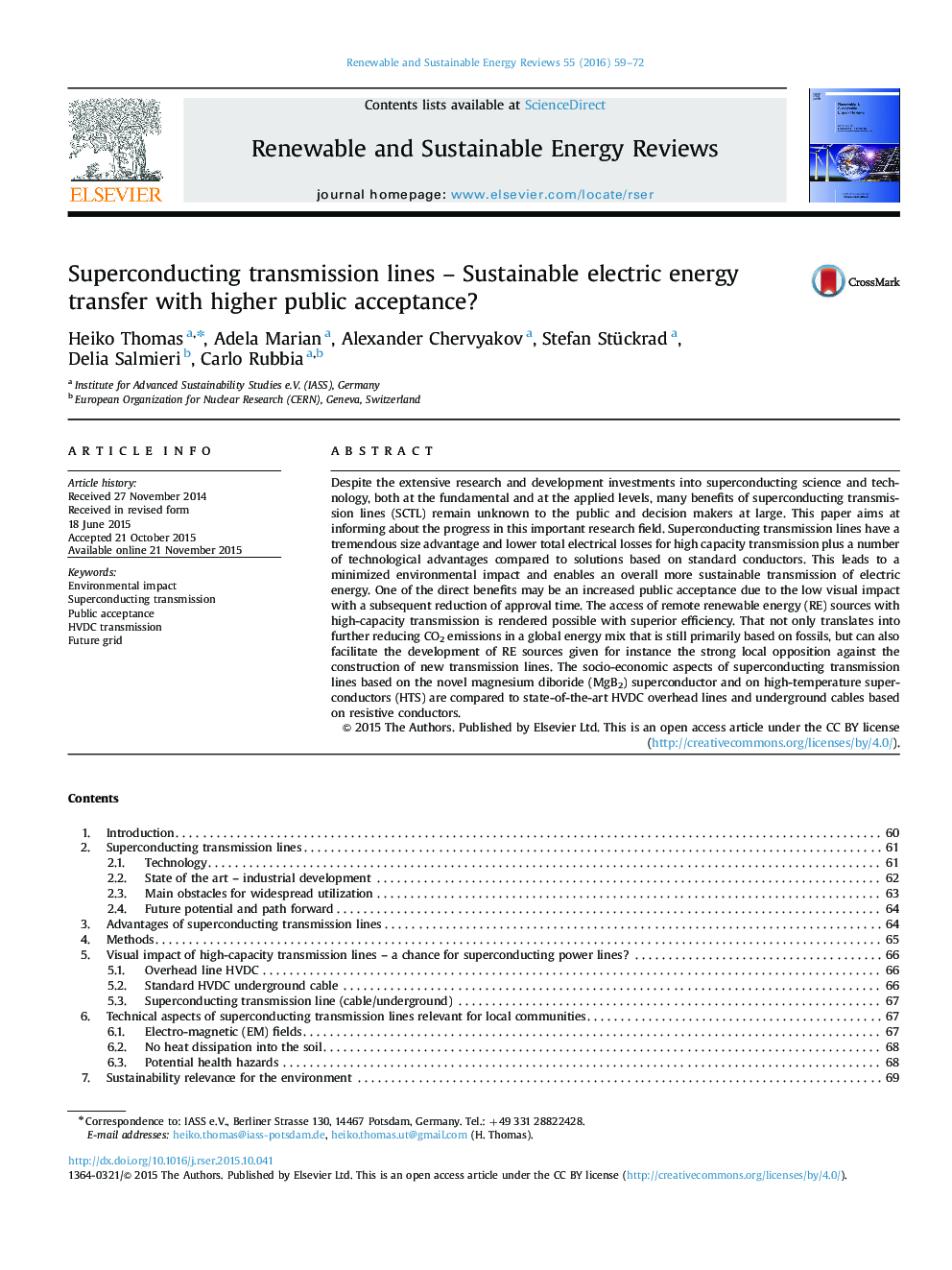| Article ID | Journal | Published Year | Pages | File Type |
|---|---|---|---|---|
| 8115133 | Renewable and Sustainable Energy Reviews | 2016 | 14 Pages |
Abstract
Despite the extensive research and development investments into superconducting science and technology, both at the fundamental and at the applied levels, many benefits of superconducting transmission lines (SCTL) remain unknown to the public and decision makers at large. This paper aims at informing about the progress in this important research field. Superconducting transmission lines have a tremendous size advantage and lower total electrical losses for high capacity transmission plus a number of technological advantages compared to solutions based on standard conductors. This leads to a minimized environmental impact and enables an overall more sustainable transmission of electric energy. One of the direct benefits may be an increased public acceptance due to the low visual impact with a subsequent reduction of approval time. The access of remote renewable energy (RE) sources with high-capacity transmission is rendered possible with superior efficiency. That not only translates into further reducing CO2 emissions in a global energy mix that is still primarily based on fossils, but can also facilitate the development of RE sources given for instance the strong local opposition against the construction of new transmission lines. The socio-economic aspects of superconducting transmission lines based on the novel magnesium diboride (MgB2) superconductor and on high-temperature superconductors (HTS) are compared to state-of-the-art HVDC overhead lines and underground cables based on resistive conductors.
Related Topics
Physical Sciences and Engineering
Energy
Renewable Energy, Sustainability and the Environment
Authors
Heiko Thomas, Adela Marian, Alexander Chervyakov, Stefan Stückrad, Delia Salmieri, Carlo Rubbia,
